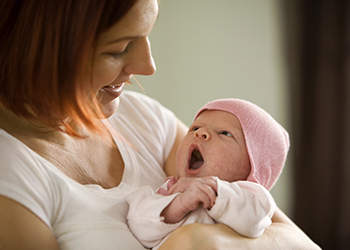
The issue
Midwifery in Canada was legalized in 1998 and in BC established as a profession under the College of Midwives by the Ministry of Health in 2000.
With midwifery a relatively ‘young’ profession, studies of planned home births attended by registered midwives have been limited by incomplete data, non-representative sampling, inadequate statistical power and the inability to exclude unplanned home births.
A study, lead by Dr Patricia Janssen, at the University of British Columbia’s School of Population and Public Health, was the first in Canada to use linked data to isolate the effect of place of birth to establish the safety of home birth for women with low risk pregnancies.
The population-based study of 2200 women compared women with low risk pregnancies who had midwives and a home birth with women with low risk pregnancies who gave birth with a midwife at a hospital; and also with a second comparison group of women who met low-risk criteria but chose to have a birth in a hospital attended by a physician.
The primary outcome of the study was to measure and compare perinatal mortality. The study also compared obstetric interventions and adverse maternal and neonatal outcomes.
Data sources linked
- Consolidation file (BC Ministry of Health)
- Hospital Separations (BC Ministry of Health)
- Midwifery data (BC College of Midwives)
- Perinatal (Perinatal Services BC)
What did we learn?
Compared with planned hospital birth attended by a midwife or physician, planned home birth attended by a registered midwife showed:
- Very low and comparable rates of perinatal death
- Reduced rates of obstetric interventions and other adverse perinatal outcomes
"This study provided the evidence needed to reassure low-risk women that homebirth is no more risky than birth in a hospital. The subsequent advocacy for homebirth for healthy women attended by registered midwives marks a new level of visibility and approval. An increase in rates of home birth could ultimately save the health care system a great deal of money."
Dr. Patricia Janssen, School of Population and Public Health, Faculty of Medicine, University of British Columbia
Making a difference
The results of the study have implications for the regulation of midwifery across Canada.
- Midwives in BC are now mandated to offer home births to low-risk women.
- The College of Physicians and Surgeons have given permission for physicians to conduct home births. This is important for women in rural areas who would like to plan for a home birth. Physicians and midwives may now be on call to look after each other’s patients so that each doesn’t have to be on call all the time for their own individual caseloads.
- Informed by this research, in November 2012, BC Health Minister, Margaret MacDiarmid, encouraged women with low-risk pregnancies to plan their deliveries at home The Ministry announced plans to earmark $500,000 for the year to pay a $350 fee for a second professional (another midwife, nurse or paramedic) required by law to attend a home birth.
